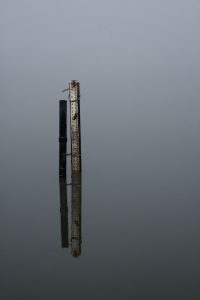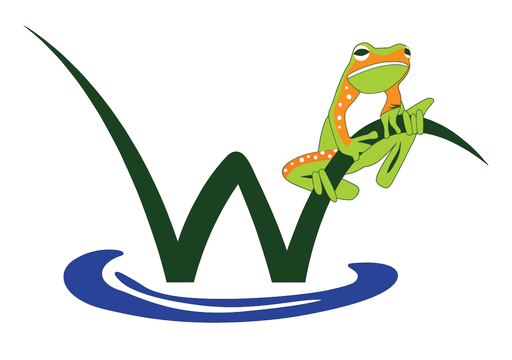Watching our wetlands transform is an awe-inspiring experience. We may see change with seasons. Or, through circulation of life-giving water and rainfall. The transformation is evident in the way their vegetation thrives, blooms and blossoms. Within the catchments where delicate ecosystems flourish as diverse organisms interact with each other and with the environment. And, in the cacophony of bird and animal sounds that fills the air with every favourable shift.
Water brings out the unique character of our wetlands.
Not all wetlands are waterlogged all the time, some depend on groundwater and others on surface water flows and still others are coastal wetlands that are revived by the seas. They may be seasonally, intermittently or permanently drenched. They may be saline or freshwater. They may be still or flowing. No matter what the nature of the wetland, water plays a central role.
Wetlands – A Living System
Wetlands support complex and diverse bionetworks. They shelter and sustain wildlife. Here landforms and soils are created, nutrients are naturally recycled and waterways are filtered and cleaned.
The specialized wetlands vegetation helps in stabilizing the soil, cleaning the water and providing resources and habitat. From upland vegetation – shrubs and trees, to fringing vegetation – sedges, rushes and paperbark trees, and floating and submerged aquatic plant-life – adequate vegetation is fundamental to wetland health.
Leaves or branches that fall from overhanging trees and shrubs are broken down by microbes, bacteria and fungi. These, in turn, become food for larger animals within the food web. And wetlands ecosystems are sustained by the functions of these tiny organisms.
Wetlands and Water
Wetlands that see water once every few years, or those that are permanently waterlogged, every wetland ecology is unique. Species of plants and animals have evolved to suit these very specific conditions of dampness, salinity and nutritional availability.
Urban and rural encroachment have posed some serious threats to the wetland ecology.
Paved roads and concrete structures mean that a greater volume of water now finds its way into the wetlands. Road run-off often contains oil, heavy metals and various other substances that leach into the wetlands. Fertilizers, pesticides and chemicals from nearby home gardens or agricultural fields too seep into the groundwater, from where they travel to the wetlands.
Environmental degradation has caused drastic changes in the water cycle. Wetlands now face prolonged inundation or drying and a constant change in the physical, chemical and biological composition of water entering the wetlands. This imbalance adversely impacts native species that are unable to survive or cope. Further, loss of native vegetation has the potential to disrupt and collapse the delicate wetlands food web.
Wetlands Rehabilitation
Our wetlands are an important and essential resource. They provide us with a natural filtration system, cleaning our waterways of harmful pollutants, absorbing and trapping carbon in the marshy soil, and replenishing our groundwater and underground aquifers. Wetland plants and animals function to strengthen this delicate link between water and wetlands.
They help regulate the climate. They supply food, fibre, fuel and medicinal plants.
Above and beyond the functions they fulfil, wetlands are a source of great beauty. They are gateways to adventure and for “experiencing nature” away from the hustle and bustle of our cities and suburbs. The abundant life they support – from native species to migratory long-distance travellers. The deep interlinkages and connections, and the balance they restore.
Wetlands rehabilitation is, therefore, the single most crucial calling of our time – revegetation, habitat restoration, conservation and protection. An involved community and teamwork. And spreading awareness about their importance.

Water Conservation
Inland freshwater wetlands provide water to over three billion people around the world.
Without our wetlands, the water in our households, industries and farms would have been unusable.
Water conservation is a vital aspect of wetlands rehabilitation work. It involves using and uncovering innovative wetlands management techniques that help control the quality of water within catchments.
Water Sensitive Urban Design Principles, in the context of urban wetlands, protect the wetlands from urban run-off and degradation. Applying these principles ensures that the infrastructure we create does not impact them unfavourably.
Water conservation is also largely dependent on the native plant and animal species, their distribution and propagation. And on our sustained rehabilitation efforts.
Come, Get Involved!
At ‘The Wetlands Centre Cockburn’, here in the heart of the breathtaking Beeliar Regional Park, we are working towards building healthier wetlands for everyone.
We are involved in landcare, conservation and rehabilitation work. We run some exciting educational programs. We are community driven, we have fantastic community outreach. And, we are pioneers in wetlands management.
With a dedicated team of volunteers and staff, and our love for wetlands, we are doing just what it takes. Come join the team and get involved with us today. You can make a difference!


I love nature and believe that protecting nature by ensuring effective and efficient utilization of natural resources will help mitigate environmental degradation. I will gladly join this team because they are working towards environmental protection.
Me tooo the nature is great the free fresh air
Thanx alot you are alife saver
Me tooo the nature is great the free fresh air